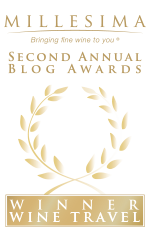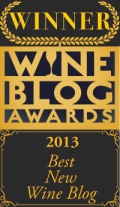Three days in Iceland sounds like too short a time to glean a comprehensive understanding of the country, and it is. If you can stay longer, do. Martin Miller’s Gin invited me to join them on a short visit to judge their international cocktail competition, and I added an extra day-and-a-half to see a few sights.
If you don’t know the premise of UK-based gin brand Martin Miller, you’d likely wonder why they would host a mixology competition in Iceland. The answer is in the water. While the spirit is distilled in England, the gin is bottled to strength in Iceland using the country’s naturally filtered H2O. We visited the water source and bottling plant, looking and tasting for proof Icelandic water makes a difference in the quality and aromatic expression of the gin. And it does. Without going into scientific detail, the juniper and botanical notes manifest more delicately with less alcoholic burn than Miller’s competitors.
After the close of the competition, a colleague and I stayed on to drive the iconic southern stretch of Ring Road 1, and walk around Reykjavik. Here are my ten insights.
Don’t Buy Bottled Water. The tap water is clean, delicious, and free. Most casual restaurants provide self-serve water stations. If you need to carry water around (which you will want to in your car), pack a reusable container with you, or else buy one bottle at the start of the trip and refill it throughout.
Don’t Exchange or Take Out Money from the ATM. If you feel more comfortable carrying a little pocket change, go ahead, but every restaurant, shop, café, and gas station I hit, accepted credit card for payments as small as a few cents. I asked a local for an explanation, and she proffered that because their money comes in notes of thousands, and lots of heavy coins are used for hundreds, people prefer to use credit than carry around cash. Makes sense.
Rent a Car. Driving in Iceland requires little effort, with big financial savings. Two of us rented an automatic from Enterprise using the tourism office downtown, for $78/day. Gas was expensive, adding another $50, but we would’ve paid anywhere from $115 to $230/person to do a Bus/Jeep tour of the same route we drove independently. We stopped when we wanted, for as long as we wanted, and didn’t have to share a cramped space with strangers while doing it. We drove the “Southern Coast” and used a brochure to map out the sights the tour guides hit. Most were visible from the road, and well-marked. You can do the same for the popular Golden Circle tour, too. This rule doesn’t apply for activity-based experiences like glacier and volcano hikes, where you obviously need a guide. Since I didn’t do any of them, I can’t personally comment, although friends of mine loved the glacier hike but disagreed on the value of spending $300 for the volcano tour.
Bring Layers. I just returned from a mid-May visit and experienced rain, snow, and 45 degree sunshine in three hours. The nights were cold. If you plan to do any ice/snow related tours like a glacier hike, you’ll want to bring more than jeans and a sweater. Pack snowboard/ski pants and jackets, gloves, hat, and hiking boots. Some tour companies provide spare layers, but if you’re out on your own and the rain kicks in sideways, or you opt to walk behind a head-to-toe soaking waterfall, you’ll be thankful for your water-resistant apparel.
Drive the Southern Coast. I had one day and could pick only one route, so I can’t comment on the most popular Golden Circle tour, which stops at a famous geyser and Europe’s largest waterfall. But for me, the southern coast offered the widest variety of Iceland’s prime assets in a compact two-hour stretch between Reykjavik and Vik, all of them free. Highlights: Multiple waterfalls including the lovely Skogafoss; changing landscapes from farmland, to moss-covered rocks, to desolate black sand beaches; and glaciers and volcanoes abutting the coastline. Eyjafjallajökull, which blew in 2010, is visible from the road, topped in snow and clouds. You can drive down Route 221 inland to the Solheimajokull glacier, and walk about a half mile up to its edge. Further towards Vik, two turnoffs lead to coal-black beaches, plunging cliffs, and unusual rock formations at Dyrholaey (the backdrop for several movies including Noah with Russell Crowe). If feels like the end of the earth. We had terrible weather the day we drove it – icy rain, whiteout fog conditions, and flat skies that wouldn’t cooperate with my photographic ambitions — and yet I still found the area stunning. I can only imagine how it would’ve looked with the sun filtering down from the firmament.
Don’t Let the Weather Ruin Your Trip. As aforementioned, I had a lot of photography hopes riding on a solitary day. The locals say if you don’t like the weather, wait five minutes. But it rained intermittently all day and the fog obscured the scenery. The rain nearly damaged my camera gear (I wasn’t prepared), and I lost a lens cap running to the car to escape a downpour. I admit to grumbling about it, a lot, but I ultimately chose to find beauty in the roiling sea and storming sky. Plus, if you’re in the city with bad weather, you can hit a few coffee shops, bookstores, or cafes to read, work, relax. They all have free wifi. In fact, so do the hotels. The city is extremely modern and connected!
Drink Coffee. I had a list of eight coffee shops to visit, and I hit five. I highly recommend the following three: Reykjavik Roasters, not far from the church. This operation represent the city’s apogee as far as third wave specialty coffee with on-premise roasting, single origin offerings, and pedigreed founders (formerly of Denmark’s acclaimed Coffee Collective). Buy beans to take home and order a kalita wave to drink in situ. For espresso-based drinks, served in a dark, retro-Scandinavian interior, hit Mokka-Kaffi. Finally, Tiu Dropar, a basement-level, full-service restaurant and bar specializing during the day in waffles and espresso-based coffee drinks, has a cozy, candlelit throwback vibe that’s perfect for a rainy afternoon. You’ll spot tourists, hipsters, young professionals, freelancers, and wizened fishermen, all hanging out.
Bring Good Camera Equipment and a Smartphone. A high-quality camera, back-up batteries, and spare memory cards, plus a raincover for your gear (advice I wish I’d had), will help capture the splendor of the county. Reykjavik’s colorful buildings, set in a harbor framed in snow-dusted mountains, is extremely photogenic, as is every half mile, once you exit the city limits. Out in the countryside, you’ll want to stop for photos constantly; the ubiquitous Icelandic horses (they don’t call them ponies), small churches, or abandoned stone huts built into the hillsides, are quite alluring. But don’t break in the middle of the road. With few cars on the highway, the temptation to pull over and shoot quickly is high. But the Ring Road doesn’t have shoulders, so wait for a pull-off and walk back for the shot.
Hotel Location Doesn’t Matter. The city is so compact and walkable, don’t fret if the property isn’t nestled in the “shopping district of the city-center,” as many that are, advertise. Also, consider using AirBnB or apartment rentals like Luna (I happened to walk by and took a look and a card), as reasonably priced alternatives. Hotel prices seemed to vary wildly depending on the booking site, so check several, including directly with the property.
Don’t Shop Near the Marina/Waterfront. Prices are highest near the start of the two main shopping streets Laugavegur and Skólavördustígur. You’ll easily spot the tourist traps filled with Icelandic sweaters, black lava salt (which is just regular sea salt dyed black), and stuffed puffin animals. The Reykjavik locals I spoke to claim they don’t wear those sweaters, but friends of mine who were in other parts of Iceland, say they’ve seen people wearing them. I was told that they wore them long ago, when they didn’t have money or access to finer things, and that they are mostly shapeless, scratchy relics of a bygone era. Use your own judgment if you want one, but the prices closer to the marina are highest. Also, there are lots of Icelandic brands of outdoor clothing shops, but none of their products are manufactured there. All of it is made in China or Asia and is quite expensive. Unless you arrived unprepared, sans coat, pants, gloves, there are no deals in the gear shops. The best Icelandic or Scandinavian clothing and home design, plus jewelry, galleries, and boutique shopping in general, begins on Laugavegur after it intersects Frakkastigur. That’s where the locals shop.
Other Observations
- You need a reservation to visit the Blue Lagoon. Make one upon arrival, or before, if possible, to avoid disappointment.
- Locals don’t tip. Food prices are high, so think of the bill as having the service cost built in.
- Hot dogs are a thing. The average blend includes lamb, giving them a lamb-y flavor. Order one with “everything.”
- Reykjavik airport has free wifi and loads of electrical outlets for both traditional 220 volt and USB. Airports around the world, TAKE NOTICE!
- Everybody has free wifi! You can find a hotspot practically anywhere you are standing in town, even if you don’t go inside a shop/restaurant.
- WOW Air just launched out of Boston and Washington D.C. (sadly, no NYC yet). It’s a discount airline. My friends flew them for $400 round-trip out of Boston. They also fly to Scandinavian destinations like Denmark, so you can extend your trip further into Europe via Iceland.
- Iceland Air allows free 7-day stopovers en route to Europe.
- Eat lots of lamb and fish.
- As early as May, perpetual twilight kicks in. Bring an eye mask for sleeping if sensitive to light.
What I Wish I Had Done
- Listened to live music. The country is filled with promising musicians.
- Chatted with more locals. I’d love to hear about their lives, and how they manage the cold and darkness for 9 months a year.
- Driven to Jökulsárlón Glacier Lagoon. It’s 4.5 hours from Reykjavik making it too far for a leisurely day-trip. Next time, if not driving the entire ring road, I’d overnight along the way. The black beach is supposedly littered with glowing blue ice broken off of glaciers, that looks like glass sculptures. A photographer’s dream.
- Hit the vibrant bar scene on a weekend (supposed to be manic) and several hotel cocktail bars like the Slippbarrin at Iceland Air Hotel Marina, 101 Hotel Restaurant and Bar, and the Kvosin Hotel Bar. All three looked chic with good quality cocktail potential. I only had time for a glance around each one.
- Stayed Longer. Driven the ring road.
Where to Stay
Affronting the wharf, the hotel pays homage to its location and the country’s maritime heritage with details like fishing nets as remote control holders, and sailor knots stamped on wallpaper. Antiques and oddities like a stuffed puffin collection, and books on Icelandic sagas, interspersed throughout the colorful, whimsical common spaces, feel playful and fresh rather than gimmicky. Rooms are cozy, but bright, and several have balconies facing the water and ships. The excellent breakfast spread is included with the rate.
Located at the base of the main shopping streets, this former printing factory turned boutique hotel, retains much of its 1940s charm. The décor mixes modern-industrial materials like cement and steel, with textiles of leather and cowhide animal print. The mood is contemporary, dark, and romantic, marked by the enormous freestanding tub in my room. The candle-lit subterranean lounge makes a great spot to start or close the night. Breakfast included with the room rate.
































